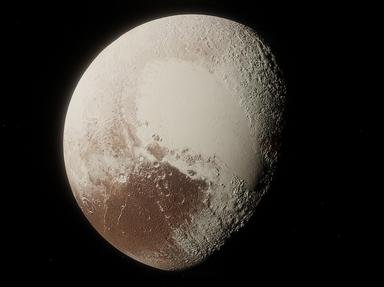Quiz Answer Key and Fun Facts
1. In what year was Pluto discovered?
2. What is the name of Pluto's largest moon?
3. Which of these are the names of two of Pluto's smaller moons?
4. There are times when Pluto orbits closer to the Sun than Neptune.
5. Pluto was the center of attention in 2006. What happened to it?
6. What was the name of the spacecraft that visited Pluto in 2015?
7. Pluto features a large geographic area on its surface arranged in what shape?
8. Does Pluto have an atmosphere?
9. Which of these worlds is smaller in size than Pluto?
10. Pluto was named after the cartoon dog created by Walt Disney.
Source: Author
RedHook13
This quiz was reviewed by FunTrivia editor
rossian before going online.
Any errors found in FunTrivia content are routinely corrected through our feedback system.

